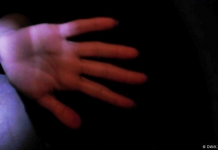ILOILO City – The onset of the wet season has seen the return of one of Western’s Visayas perennial scourges, dengue fever, with cases across the region already dwarfing those of coronavirus disease 2019 (COVID-19).
Finding itself fighting a battle on two fronts, the Department of Health (DOH) Region 6 reported that from Jan. 1 to Aug. 1 this year, dengue fever has affected more than 2,608 people and killed six.
Dengue is a mosquito-borne viral infection causing a severe flu-like illness that could sometimes be fatal. Its carriers are day-biting mosquitoes (Aedes albpictus and Aedes aegypti) that live and breed and clean, stagnant water.
Here’s the breakdown of this year’s suspected dengue cases:
* Negros Occidental – 770 with one death
* Iloilo Province – 499 with one death
* Aklan – 388 with one death
* Capiz – 277 with one death
* Antique – 225 with one death
* Iloilo City – 191 with one death
* Bacolod City – 154 with zero death
* Guimaras – 65 with zero death
There were also 39 suspected dengue cases tagged to other regions.
“The number of dengue cases in the region is just as many as the number of COVID-19 cases,” Dr. Glen Alonsabe, DOH-6 epidemiologist, told Panay News.
As of Aug. 11, there were 2,307 COVID-19 confirmed cases in Western Visayas, 1, 203 of which are active cases.
Although dengue cases recorded this year is 93 percent lower compared to the same period last year (35, 393 cases with 173 deaths), Alonsabe urged Western Visayans not to be complacent.
He said everyone should continue practicing the 4S strategy against dengue – “search and destroy” mosquito breeding places; “self-protection” from mosquito bites; “seek early consultation” when signs and symptoms of dengue occur; and “say yes to fogging” as a last resort.
He also stressed the importance of personal hygiene, proper hand-washing and cough etiquette, pointing out the “overlapping” symptoms of dengue and influenza-like illnesses such as fever.
In August last year, the Department of Health declared a national dengue fever epidemic, sounding a public health alarm when it recorded more than 146,000 dengue cases during the first half of 2019, or a whopping 98-percent increase compared to the same period in 2018, with more than 700 deaths.
This resulted to hospitals bursting at the seams with patients. There was a shortage in hospital rooms, beds, doctors, and nurses.
The demand for blood (for blood transfusion to patients with severe dengue) also spiked.
When local governments fail to invest in dengue preventive measures, outbreaks ensue, according to Health Secretary Francisco Duque.
The World Health Organization said individuals should suspect dengue when a high fever (40 degrees centigrade) is accompanied by two of the following symptoms: severe headache, pain behind the eyes, nausea / vomiting, swollen glands, muscle and joint pains, and rash. For severe dengue, the warning signs to look out for are: severe abdominal pain, persistent vomiting, rapid breathing, bleeding gums, blood in vomit, fatigue, and restlessness./PN



